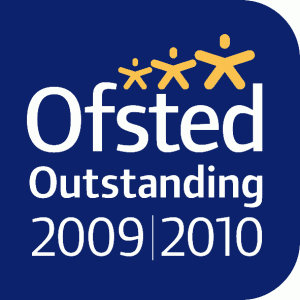Marvellous Maths
Marvellous Maths provides a range of learning activities to explore, develop, demonstrate, understand, consolidate and apply Maths and communication skills. These include working on number activities to develop these functional skills. Numbers are all around us. We see them and use them all the time. We can explore them, recognise them and sequence them. We can anticipate which number comes next. We can trace them and write them in different materials. We can generalise our number skills in different contexts. Marvellous Maths also covers a variety of Maths topics such as shape, time, capacity, measurement using a range of practical activities to experience and explore these important skills.
Pattern
Patterns are everywhere. They are all around us and can be spotted everywhere we go. We can label them, noticing details. We can describe them. There are so many patterns in nature which are great to explore. They have similarities and differences. They can be made up of shapes, colours, lines, spots.You can sequence objects or shapes to make patterns too.
- Animal Patterns
- Continuing Patterns Activity Sheet 1
- Continuing Patterns Activity Sheet 2
- Flower Pattern Board
- Interlocking Cubes Caterpillar Activity
- Mark Making Pattern Cards
- Missing Pattern Cards Activity
- Repeating Fruit Pattern Activity Sheet
- Repeating Patterns Shapes and Colours
- Two Colour Repeating Pattern Activity Sheet
Number
Number is a very important functional skill. Numbers are all around us. We see them and use them all the time. We can explore them, recognise them and sequence them. We can anticipate which number comes next. We can trace them and write them in different materials. We can generalise our number skills in different contexts.
Go on an outside maths hunt (resource below) Have a look for 3 stones, 5 sticks, 2 birds etc
How many rainbows can you spot in windows? Can you count the colours?
Use everyday objects to count, you could pair the objects and try some repeated addition counting in 2s.
Have a look at the house numbers on your street? Can you identify what numbers they are?
Can you see which are odd and which are even?
Help to put the washing out. Can you count the items?
Can you count the socks?
Count out items at snack time. Have a go at sharing between plates.
Hide numbers throughout a room or in your garden, Can you find and match the numbers? Can you identify them? Can you add them?
Have a look at our ‘In the cupboard’ ideas to use things you might have at home.
Roll a tower. Use a dice and some bricks. Child rolls the dice, counts dots/says number and makes a tower using blocks, Lego, Duplo, whatever they have. You can find dice online to use. Extension could be add one etc.
1. Number Hunt in Jelly
Spread out some plastic numbers in jelly layers. When it’s all set, give out some tongs to children and show them how to pick up the numbers from the wiggly substance (and practice their fine motor skills along the way!). This sensory play is a great way of sneaking in number recognition to something fun and engaging for the children. You could use spaghetti, yoghurt, playdough too
What you need –
- Jelly
- Bowls
- Plastic Numbers
- Tongs
2. Missing Numbers
Write number sequences on craft sticks and remember to leave some blanks in between. Next, you write the missing numbers on the clothes pegs and give them out to your child. Now you’re ready to let the children use their fine motor skills and clip the pegs on sticks. The best thing about this maths activity is that you only create the props once and they’re ready to be used as many times as you like.
What you need –
- lolly Sticks (colour or plain)
- Sharpies
- Clothes pegs
3. Number Splat
Prepare some sticky notes with various numbers and place them in front of the children armed with fly swatters. The goal of this simple yet fun game is for the little ones to identify the number on the dice and match it with the ones written on sticky notes before smacking the correct answer with a fly swatter!
What you need –
- Dice
- Fly Swatter ( a spatula will also work nicely)
- Sticky Notes
4. Do-a-Dots!
Tape some paper to the wall and write several numbers, each decorated with as many dots as the number. Now, children can touch each dot with a do-a-dot marker and see the number and the quantity all together! You can also put the paper on the floor but holding a marker up and out makes this not only an activity for early years maths but also a good way to strengthen those arm muscles.
What you need –
- Paper
- Sharpie Marker
- Coloured markers
5. Egg Cracking
Create ‘eggs’ by cutting out oval shapes from cardboard and write different numbers on them. Let the children identify the numbers and crack the eggs by punching the corresponding number of holes in them. This exercise can also help develop hand muscles.
What you need –
- Cardboard
- Hole Punch
- Sharpie Markers
- Scissors
Super simple songs: https://www.youtube.com/watch?v=7D4K9oi7oBM
Games:
https://www.topmarks.co.uk/learning-to-count/underwater-counting
https://www.topmarks.co.uk/learning-to-count/ladybird-spots
https://www.topmarks.co.uk/learning-to-count/helicopter-rescue
https://www.topmarks.co.uk/maths-games/mental-maths-train
https://www.mathsisfun.com/worksheets/kindergarten.php
Number Activity Sheets
- 10 Green Bottles Widgit
- In My Cupboard maths ideas
- Number Addition to 20
- Number bonds to 20
- Number Formation Practice
- Number Shape Cards
- Odd and Even Colouring Stars to Twenty
- Ordering Numbers 1 50
- Ordering Numbers 1 to 10
- Ordering to 20 Cut and Stick Activity Sheet
- Outdoor Maths Trails
- Picture Cards
- Superhero Missing Number 1 to 20
- Treasure Hunt Activity
Shape
Shapes are all around us, in everything we do. Shapes are fun to find and look out for. What do you notice about them? There are lots of learning activities you can do using shape, size and colour.
You could have your own shape show! Create simple shape puppets a talk about their names and their properties.
‘I’m Circle and I have 1 side’ ‘I’m square I have 4 sides and 4 corners’ You could use some house hold objects, Tubes and boxes to create 3D characters
Potato stamping. Cut shapes into halves of potatoes and stamp into colour and onto paper/ card, recognising the shapes.
Explore 2d & 3d shapes using toothpicks and chickpeas to create your own shapes.
Make a feely shape book, to explore, recognise and name shapes.
Have a go at printing with some cardboard roll shapes. Can you recognise and name the shapes and colours?
The shape show- https://www.youtube.com/watch?v=NaNrzQUyuPQ
Teacher’s TV looking at shapes in real life https://www.youtube.com/watch?v=1OELtQwUMaE
BBC shape songs https://www.bbc.co.uk/bitesize/clips/zhnvcdm
Mister Maker explores shapes https://www.youtube.com/watch?v=YfXB_-xFnvM
Shape Game https://www.booktrust.org.uk/books-and-reading/have-some-fun/storybooks-and-games/shape-game/
Use flat sponges and cut into different shapes for sensory play or making pictures (You could try squares, circles, rectangles and triangles)
Cut and stick shape pictures are in our previous shape section of the hub.
Go on a shape hunt. Have a list of shapes or pictures of shapes to find. You could draw your own or use the Twinkl shape hunt resources here.
Create shapes using pipe cleaners, straws or lolly sticks- Guess the shape, ask questions- What shape could you make with 4 lolly sticks? What about 3?
Use chalk outside to draw and guess different shapes.
Complete a shape quiz using the Twinkl Power point.
Make shape monsters with cardboard (e.g. a triangle, square and circle shape monster) - cut a triangle, square or circle shape for the monster's mouth and feed them with different-shaped items
Make shapes with masking tape and place items along the outlines (e.g. pom-poms or buttons)
Make shape decorations with clay
Find shapes in sensory trays
Make shape art - e.g. houses, rockets etc. with shape pictures
I'm a Circle
/i/video/Maths/Shape/Im_a_circle.mp4
Shape Rap
/i/video/Maths/Shape/shapes_rap.mp4
Square Song
/i/video/Maths/Shape/Square_song.mp4
Triangle Song
/i/video/Maths/Shape/triangle_song.mp4
Shape Activity Sheets
- 2D Shape Bee Picture Activity Sheets
- 2D Shape Butterfly Picture Activity Sheets
- 2D Shape Cards
- 2D Shape Ladybird Picture Activity Sheets
- 2D Shape Reveal Powerpoint
- 2D Shape Sorting
- 2D Shape Spider Picture Activity Sheets
- Build a Shape Dinosaur Activity
- Colour 2D Shapes
- Colour 2D Shapes 2
- Make 3D Shapes
- Match 2D Shapes
- Real Life 3D Objects
- Shape Egg
- Shapes 2D
- Sorting Shapes Big Small
Measuring
Measuring is another important functional skill we use every day. Measuring can be done with a number of different tools such as handfuls, spoons, tubs, scales. Measuring can be done with non-standard units such as blocks, hands, paperclips, straws. Or standard units grams, millilitres, centimetres. Measuring can also be done with lots of different types of equipment scales, tape measures, rulers etc.
Use different objects to compare length- pencils, sticks, spaghetti, paintbrushes, lego towers, bricks, toys Can you find the longest and the shortest? Can you order them? Perhaps you could measure them with a ruler or find the difference.
Use different things to measure- paperclips, pegs, hands make chains of paperclips or pegs, compare or measure the lengths
Size/length -draw around shadows and measuring with different items. Have competitions to build the biggest tower/make the longest line of dominoes before knocking them all down! Measure length with painted footprints. Move cars down a ramp/tube and measure how far the car whizzes along the floor.
Weight - make scales using coat hangers, string and plastic cups. Drop heavy and light items into a water tub to see the big and small splashes. Do some baking/cooking and weigh the ingredients.
Capacity - sensory play (filling and emptying containers, measuring jugs, funnels, colanders etc. with different sensory items), using fine motor skills to fill containers, e.g. posting items, placing items in containers with spoons/tongs etc. filling up popcorn bowls
Make playdough and weigh out the ingredients.
Use playdough to make worms to measure and compare. Can you make a shorter one, or a longer one? Can you make 3 and put them in order?
Complete a measurement hunt. Take an item, can you find one that is longer, shorter, heavier or lighter?
Create an exploration box or basket with different objects in which are different lengths and weights. Explore them. A challenge could be to weigh them all or measure their length.
Measuring Activity Sheets
- Caterpillar Measuring Sheet
- Cubes Counters and Paperclips Measuring activty
- Cubes Dinosaur Sheet
- How many building bricks work sheet
- Longer Shorter Activity Sheet
- Magic Wand Measuring 1
- Mark the readings on the ruler
- Measure Fish Activity
- Measure in Cubes
- Measure the lines
- Measuring activity sheet
- Measuring at Home Activity
- Measuring Crocodiles Work Sheet
- Shortest Tallest
- Size Ordering Activity
- Tall and Short Pecs
- Tallest Object Work Sheet
- Worm Measuring activity sheet
Time
Time is another important functional skill- It can start with requesting more or finished. When we explore time we can think about how long it takes to complete something, what order we do things in or what activities we might do on a certain day. We can think about the days of the week and months of the year. We can think about schedules, timetables and calendars. Time is all around us.
Engage your child in the times you do things- What time do you wake up, have breakfast, have a snack? Can they match the times to the activities?
Use timers to have some fun https://www.online-stopwatch.com/classroom-timers/
These timers prove very popular with Springwell pupils. Use them to complete an exercise, build a tower, feel the difference between different time scales.
Exploring fast and slow through dancing an obstacle course or musical instruments
Make a giant clock with chalk in the garden, use a hula hoop and post-it notes to order the numbers around a clock
Order the days of the week and months of the year. Have a go at writing/ matching the date everyday or exploring a calendar.
Match the numbers on a clock or fill the numbers in. Can you match analogue to digital?
Make a clock out of paper plates https://www.pbs.org/parents/crafts-and-experiments/learning-to-tell-time-with-a-paper-plate-clock
Make a clock using numbers made out of lego.
This teaching clock enables you to make times https://www.topmarks.co.uk/time/teaching-clock
Use the resources to draw the hands on different clocks, or identify the time.
https://www.senteacher.org/printables/freeworksheets/18/Telling-The-Time-Worksheet.html
Share the story of Mr Wolf’s week https://www.youtube.com/watch?v=nCp9NIzmgtw
and complete the colouring sheets to accompany the story.
Have a go at some time games
http://www.maths-games.org/time-games.html
https://www.everyschool.co.uk/maths-key-stage-1-tell-the-time.html
https://mathsframe.co.uk/en/resources/resource/116/telling-the-time
Time Activity Sheets
- Blank Clock Cut Out Cut and Stick Activity
- Clock matching game oclock
- Days of the week caterpillar
- Days of the Week Cut and Stick Worksheet ver 3
- Days of the Week Yesterday and Tomorrow Worksheet ver 1
- Draw the clock hands sheet 1
- Draw the clock hands sheet 2
- Half and Hour Time sheet 1
- Half and Hour Time sheet 2
- Half and Hour Time sheet 3
- Half and Hour Time sheet 4
- Interactive Clock Games
- Jigsaw Clocks
- Make your own practice clock
- Months of the year cycle
- Mr Wolfs week pictures
- Oclock Matching Flashcards
- telling the time 1
- telling the time 2
- telling the time 3
- Telling the Time Peg Matching Game o clock
- Telling the Time Peg Matching Game quarter to quarter past
- Telling the Time Peg Matching Game to five minutes
- Time symbols
- What day month weather today
- What day month weather today colourful for matching ease
- Write the Time Work Sheet 1
- Write the Time Work Sheet 2
- Write the Time Work Sheet 3
- Write the Time Work Sheet 4
Grouping & Multiplication
Creating groups is an important skill. We are classifying, we are learning that objects can be put into different groups. You can group by type, size, colour, texture. You can identify numbers and amounts to group.
Matching pairs of socks – Use real socks or the cut and stick activity
Peg socks to a line/ string in pairs.
Pairing matching objects- explore pairs- matching shoes, socks, cards, toys, coloured paper shapes, letters, numbers
Grouping different objects into 2s, 3s, 4s you could use cutlery, pencils, pasta, pom-poms, bricks, lego, grass, flowers, toys
Have a look at some of these fabulous multiplication ideas. You just need some paper and some house hold objects. Create a skip counting caterpillar or a multiplication number trail. See photos Multiplication 1-4 Trace a big number and then make groups of that number, or that number as it multiplies.
At mealtimes or snack time group your fruit, cereal, sandwiches etc
Draw ladybird pictures and double the amount of one side to the other
Grouping numbers of blocks/ marbles/ pasta/ biscuits/ Lego pieces to match number on sheet.
Number matching- see resources
If you go out on a walk you could look for things in 2s- cars, dogs, plants, houses, bikes, scooters
Use playdough to create groups or arrays
Make a Magic Multiplication or Multiplication Air hockey game using cardboard rolls- see resources.
This website uses lego to explain and teach multiplication https://mathgeekmama.com/lego-multiplication-division/
Match the ladybirds spots https://www.topmarks.co.uk/learning-to-count/ladybird-spots
Explore array formations for multiplication https://education.abc.net.au/home#!/media/1496767/the-array
Grouping & Multiplication Photo Ideas


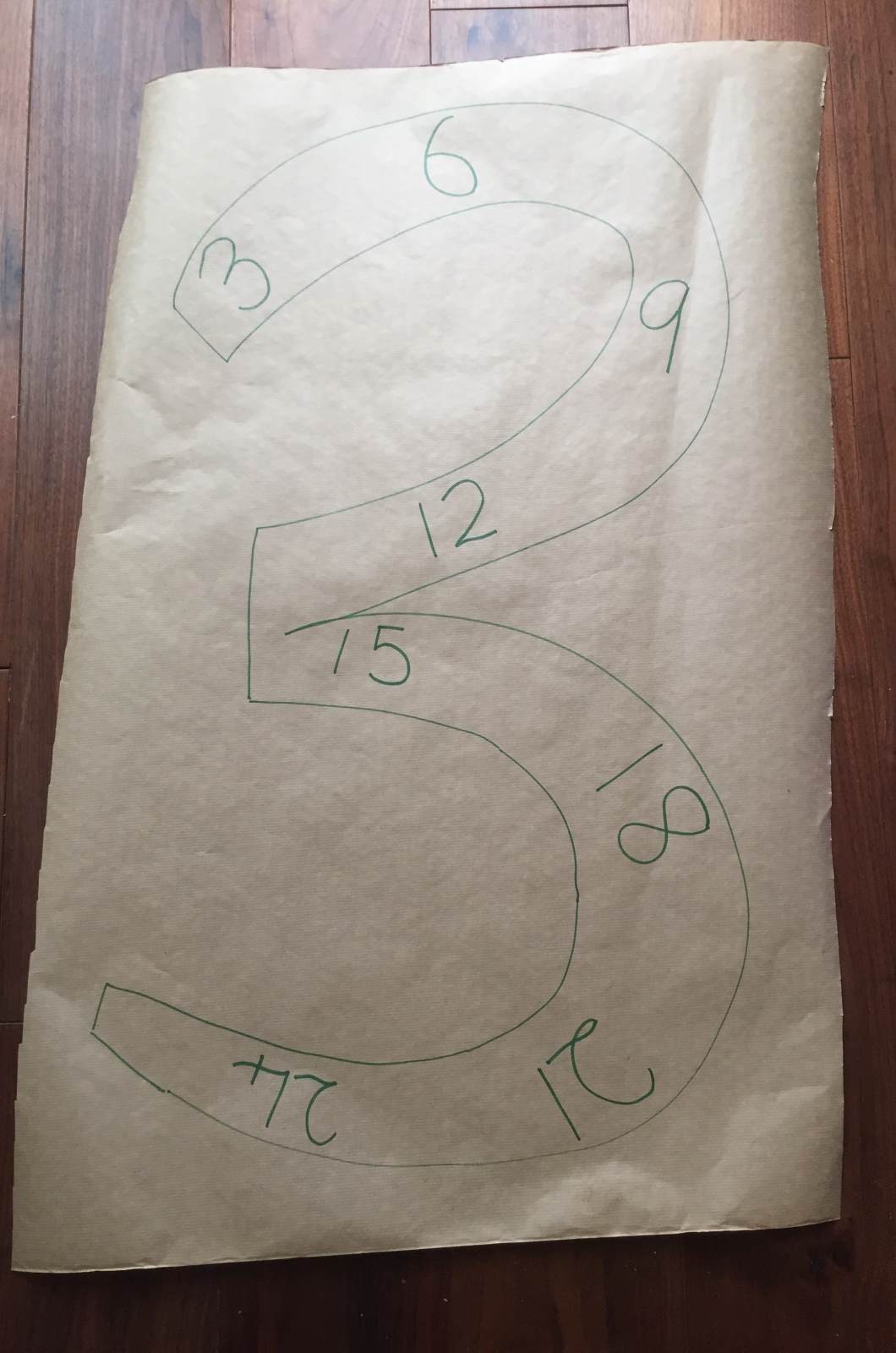





Grouping & Multiplication Activity Sheets
- Feeding the minibeasts activity sheet ver 1
- Grouping Activity Sheet
- Groups of Five Memory Game
- Groups of Four Memory Game
- Groups of Three Memory Game
- Groups of Two Memory Game
- Magic Multiplication
- Making groups of five differentiated activity sheets
- Making groups of two activity sheet english
- Multiplication air hockey activity
- Number Match Independent Task
- Patterned Socks Pairing Activity
- Spring Themed Division by Grouping Activity Sheet
Sharing & Division
Sharing is an important building block to division. It is also an important social skill which can be worked on. Sharing toys and food is a great way to practise sharing skills.
Use egg boxes or food packaging with compartments to share out objects into compartments/ sections. You could use raisins, cheerios, grapes (see photo)
Items to share
Share a picnic/ tea party
Draw circles on a sheet of paper and share objects out. If you are outside you could use chalk and share petals, leaves etc – see photos
Use lids/ circles/ cut outs to share objects such as cars- see photo
You could have a tea party and share items between plates. Or make Pizza and share the sections.
You could try fruit skewers- either sharing the fruit pieces out between skewers or dividing the fruit into a certain number of pieces.
You could share items out between your toys.
You could use the lunchbox sharing resources, or share items out when it is time for lunch- If I have 4 pieces of banana and 2 plates how many will go on each plate?
If I have 6 strawberries and 3 plates how many will I put on each plate?
Try an active game in the garden collecting balls/bean bags etc.
Sharing between two buckets
Peeling coloured stickers and dividing them into colour groups
There are visual sharing and word problem sharing resources in the folder using bigger numbers too.
Grouping Game:https://www.ictgames.com/airlineGrouping/airlineGrouping.html
Help Curious George share out his dog’s treats https://pbskids.org/curiousgeorge/busyday/dogs/
Share the dog bones https://www.ictgames.com/mobilePage/doggyDivision/index.html
Watch divide and ride a division story https://www.youtube.com/watch?v=RjneubEuLBc
The story of 100 hungry ants https://www.youtube.com/watch?v=m1c8FoEVdQg&list=PLHga5qwYTSkorf1X1bz-yXgxCVeDkwgYf
The door bell rang -a story about sharing cookies
https://www.youtube.com/watch?v=gNTSBmbVNLE
Sharing and Division Photo Ideas





Sharing and Division Activity Sheets
- Feeding the minibeasts activity sheet ver 1
- Grouping Activity Sheet
- Groups of Five Memory Game
- Groups of Four Memory Game
- Groups of Three Memory Game
- Groups of Two Memory Game
- Magic Multiplication
- Making groups of five differentiated activity sheets
- Making groups of two activity sheet english
- Multiplication air hockey activity
- Number Match Independent Task
- Patterned Socks Pairing Activity
- Spring Themed Division by Grouping Activity Sheet
More Number Fun
Number is a very important functional skill. Numbers are all around us. We see them and use them all the time. We can explore them, recognise them and sequence them. We can anticipate which number comes next. We can trace them and write them in different materials. We can generalise our number skills in different contexts
We have lots of practical ideas for having fun with Numbers. They are fun to spot when you are out an about. It is surprising how many numbers you can find!
Take part in a Number Hunt. Hide the numbers on post its/ paper around the house/ garden. When you find them, order them, and then make sets of each amount using everyday objects.
Go out on a number hunt. Have a list of numbers It could be 1-10 or bigger numbers, 2 digit or 3 digit and tick of or mark the numbers as you see they. They could be on houses, bus stops, buses, car registration plates. It’s fun to stop and identify different ones. You could count how many different numbers are on your road or near where you live.
Have a go at creating some simple games like cardboard roll bowling see photos this is very simple to adapt
- Count the number of rolls you knock down
- Write numbers on the rolls- identify the numbers you knock down
- Have some numbers written down on post it notes. Can you find the post it note that matches the roll you have knocked down
- Add or subtract the numbers on the rolls you knock down
- Double the numbers you knock down
- Are they odd or are they even?
- Make a tally of the numbers knocked down and then add the tally
- Make a cardboard roll tower see photos How many can you stack? Knock it down. How many fall over?
Make a pot number match see photo -draw around plastic pots on a sheet of card or paper. Within these shapes draw a number of dots. On the bottom of the pots write the numbers which correspond with the numbers of dots. Then you can match the pot to the dots.
Playdough straws- see photo Push some straws/ skewers/ into a slab of playdough and then put pasta onto the straws counting the amounts or add pasta to a given amount. See photo
Match the pegs to the numbers- see photo
Draw around your hands and create finger number bonds see photo
Make number sets with cereal or cotton wool balls- see photo
Race to fill the cup - roll a dice and put that number of items in the cup, taking in turns. Who can fill the cup first. see photo
Peg numbers on the washing line - have number cards - can the children find certain numbers to peg on the line? Can they peg them in order? Can they peg even and odd numbers?
Number playdough - can the children make numbers with playdough? Can they make a certain number of playdough blobs and stick them onto number cards?
Peg the correct number of pegs onto number cards
Use cotton buds to trace numbers and practice number formation
Roll a dice and collect this number of Lego pieces to build a tower. Take turns and see who can build the biggest tower!
Write numbers in cup-cake cases. Can the children fill them with the correct number of items, e.g. pom-poms, cheerios?
Number hunt around the house/in the garden. Place number cards around the house/garden. Give children post-it notes with numbers on. Can they match the numbers on their post-it notes to the numbered cards?
Practical games in the garden - see how many balls/bean bags etc. they can throw into a tub - have a competition - who has the most?
Number- writing numbers on duplo or lego and ordering - or doing number sequences
Fishing game- make some fish with number sums on the back to answer or just numbers to order- either fish using a magnet and split pins or I guess in a box with a net..or in a bag! nice picture of home made ones on here https://theimaginationtree.com/5-little-fish-magnetic-counting-game/
Lego- https://www.facebook.com/LEGODUPLO/videos/591377208008959/
Free App- Pop the numbered balloons. 'Balloon pop'
Number stickers- Write a number on a piece of paper. Ask what the number is. Child then to cover the outline of the number in stickers.
There are some good, interactive number games here:
http://www.priorywoods.middlesbrough.sch.uk/page/?title=Program+Resources&pid=389
https://www.topmarks.co.uk/maths-games/3-5-years/counting
https://www.topmarks.co.uk/maths-games/5-7-years/sequencing-numbers
Oxford Owl Maths Games https://home.oxfordowl.co.uk/?s=maths+online+activity&fwp_post_types=activities
Some great Numeracy activities https://www.bbc.co.uk/cbeebies/topics/numeracy
BBC Bitesize Numbers https://www.bbc.co.uk/bitesize/topics/z9pnb9q
https://www.bbc.co.uk/bitesize/topics/zpdwxnb
More Number Fun Photo Ideas









Odd & Even
There are many patterns which numbers can follow. Exploring odd and even can be done simply by building towers, looking at visual groups (odd groups will have an extra) and looking at the 2 different groups to 10 and then ending of numbers.
We have lots of fun practical activities to explore, sort and learn about odd and even numbers.
Use a variety of socks -odd socks and even socks (how many socks do you have? Do they all have a pair?) If there is one it is odd. If there are 2 it is even.
Draw/ cut out the numicon number shapes in resources. Which numbers have an extra circle on the top? Can you sort the shapes into two groups?
Write numbers on a trampoline/ pavement using chalk. When you call an odd number the child has to jump on that. Repeat for even! See photo
Number blocks odd and even https://www.bbc.co.uk/iplayer/episode/b08r2l4d/numberblocks-series-2-odds-and-evens
Use an egg box, number the sections 1-6 or 1-12 and colour them in 2 different colours, one for od and one for even- pick a number and fill the number into the egg box. How many have you got? Is the number colour odd or even?
Using the photos for inspiration you could make odd and even number people- Odd Todd and Even Steven
Make 2 post boxes, one for odd numbers and one for even numbers. Make some post with numbers to sort.
Go on a number hunt and record odd and even numbers into different columns.
Choose a number from the bag. Can the children count this many items, e.g. cars? Can they put them into pairs/find the cars a friend. Does every car have a pair/friend? Yes - put this number card into our even pile. No - put this number card into our odd pile.
Roll a dice and put this number of counters into holes in an ice-cube tray. Does every counter have a pair?
Sort even and odd numbers using stickers (do the stickers have a pair?)
Make an odd and even number paper chain. Use one colour for odd numbers and another colour for even numbers. Can the children notice the pattern?
5 activities to learn about and practise Odd and Even https://www.doorwayonline.org.uk/number/oddandeven/
Splat the fruit Odd and Even http://www.sheppardsoftware.com/mathgames/earlymath/Fruit_shoot_odd_even.htm
Number Ninja https://www.abcya.com/games/number_ninja_odd_even
A nice odd and even game - https://www.topmarks.co.uk/learning-to-count/coconut-odd-or-even
Catch a Star odd and Even game https://www.ictgames.com/mobilePage/chimney/index.html
Odd and Even with BBC bitesize https://www.bbc.co.uk/bitesize/topics/zknsgk7/articles/zt4jj6f
https://www.bbc.co.uk/bitesize/clips/zphsb9q
Scratch Garden Odd and Even Song https://www.youtube.com/watch?v=WacilGHlhS4
A fun way to help children see the pattern of odd and even numbers is for them to shout the odd numbers and whisper the even numbers. Or colour the numbers in 2 different colours
Use our pintables to explore Odd and Even further!
Odds & Evens Activity Sheets
- Ideas for learning about Odds and Evens
- Norwood Odd Even
- Number blocks
- Number Shape Cards
- Odd and Even Numbers
- Odd and Even Posters
- Odd and even number sorting activity
- Odd and even number sorting activity 2
- Odd and Even Number Sorting Activity 3
- Odd and even numbers sorting activity powerpoint
- odds and evens i
- odds and evens ii
- odds and evens iii
- odds and evens iv
- odds and evens v
The Shape Show
Shapes are all around us, in everything we do. Shapes are fun to find and look out for. What do you notice about them? There are lots of learning activities you can do using shape, size and colour.
You could have your own shape show! Create simple shape puppets a talk about their names and their properties.
‘I’m Circle and I have 1 side’ ‘I’m square I have 4 sides and 4 corners’ You could us e some house hold objects, Tubes and boxes to create 3D characters
Potato stamping. Cut shapes into halves of potatoes and stamp into colour and onto paper/ card, recognising the shapes. See photo
Explore 2d & 3d shapes using toothpicks and chickpeas to create your own shapes. See photo
Make a feely shape book, to explore, recognise and name shapes. See photo
Have a go at printing with some cardboard roll shapes. Can you recognise and name the shapes and colours? See photo
The shape show- https://www.youtube.com/watch?v=NaNrzQUyuPQ
Teacher’s TV looking at shapes in real life https://www.youtube.com/watch?v=1OELtQwUMaE
BBC shape songs https://www.bbc.co.uk/bitesize/clips/zhnvcdm
Mister Maker explores shapes https://www.youtube.com/watch?v=YfXB_-xFnvM
Shape Game https://www.booktrust.org.uk/books-and-reading/have-some-fun/storybooks-and-games/shape-game/
Use flat sponges and cut into different shapes for sensory play or making pictures (You could try squares, circles, rectangles and triangles)
Cut and stick shape pictures are in our previous shape section of the hub.
Go on a shape hunt. Have a list of shapes or pictures of shapes to find. You could draw your own or use the Twinkl shape hunt resources here.
Create shapes using pipe cleaners, straws or lolly sticks- Guess the shape, ask questions- What shape could you make with 4 lolly sticks? What about 3?
Use chalk outside to draw and guess different shapes.
Complete a shape quiz using the Twinkl Power point.
Make shape monsters with cardboard (e.g. a triangle, square and circle shape monster) - cut a triangle, square or circle shape for the monster's mouth and feed them with different-shaped items
Make shapes with masking tape and place items along the outlines (e.g. pom-poms or buttons)
Make shape decorations with clay
Find shapes in sensory trays
Make shape art - e.g. houses, rockets etc. with shape pictures
The Shape Show Images


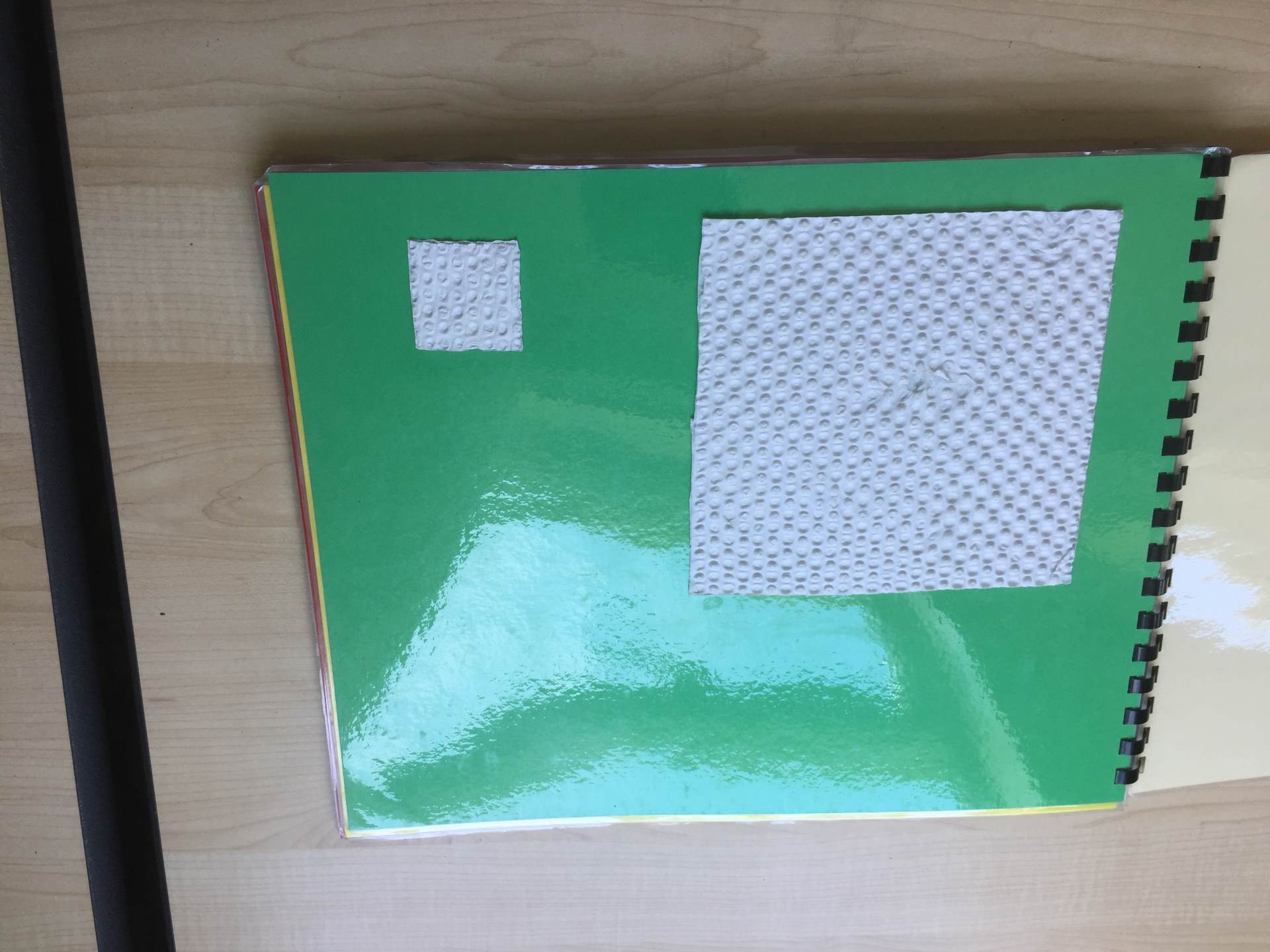




The Shape Show
Most & Least
It is important to identify different amounts of objects and numbers- to know that more means a larger amount or visually bigger- you give something more. And less means a smaller amount or visually smaller. You take something away.
Most and least can be explored through numerous fun ways! Explore different amounts using objects/ materials/counters/toys/pasta/pencils/lego bricks, anything really! Give amounts to group ( you could write these on post it notes) and identify whether these are the most/ least. You can change the activity by giving more groups or larger numbers.
Try some most and least- games to see who can get the 'most' e.g. catch the most balls, get the most in the tub, find the most teddies around the house etc Perhaps pick things you have to find.
Have jelly, shaving foam, food or toys on paper plates and children to identify which plate has most and least.
Look at quantities when exploring food, bowls or cereal, raisins or peas- which bowl has the most?
Use Pegs on cardboard . Which has the most Which has the least?
Thread using cheerios or pasta on string and discuss the amounts, which thread has the most?
Compare towers made of lego with most and least bricks
Chalk circles to group outside and use natural objects
Look at dots on pictures of lady birds- Which has the most Which has the least?
Make caterpillars by drawing circles or using stickers. Which has the most circles? Which has the least?
Explore most and least using a colour game. You will need 2 groups of coloured objects and a drawn grid – see photo roll a colour dice/ pick a coloured card and place the object of that colour onto the grid. Continue until the grid is full. Which colour takes up the most squares?
Use the picture group worksheets to identify the group with the most
More or less game https://pbskids.org/curiousgeorge/busyday/bugs/
Mucky Monsters http://www.ictgames.com/mucky.html
A good game for longing at larger and smaller numbers http://www.ictgames.com/rabbit2.html
Looking at the signs < > to identify greater than and less than https://www.education.com/game/less-than-greater-than/
Counting Fish https://www.abcya.com/games/counting_fish
Use the Goldilocks most and least resource to explore which character has the most/least
Most and Least Photo Ideas



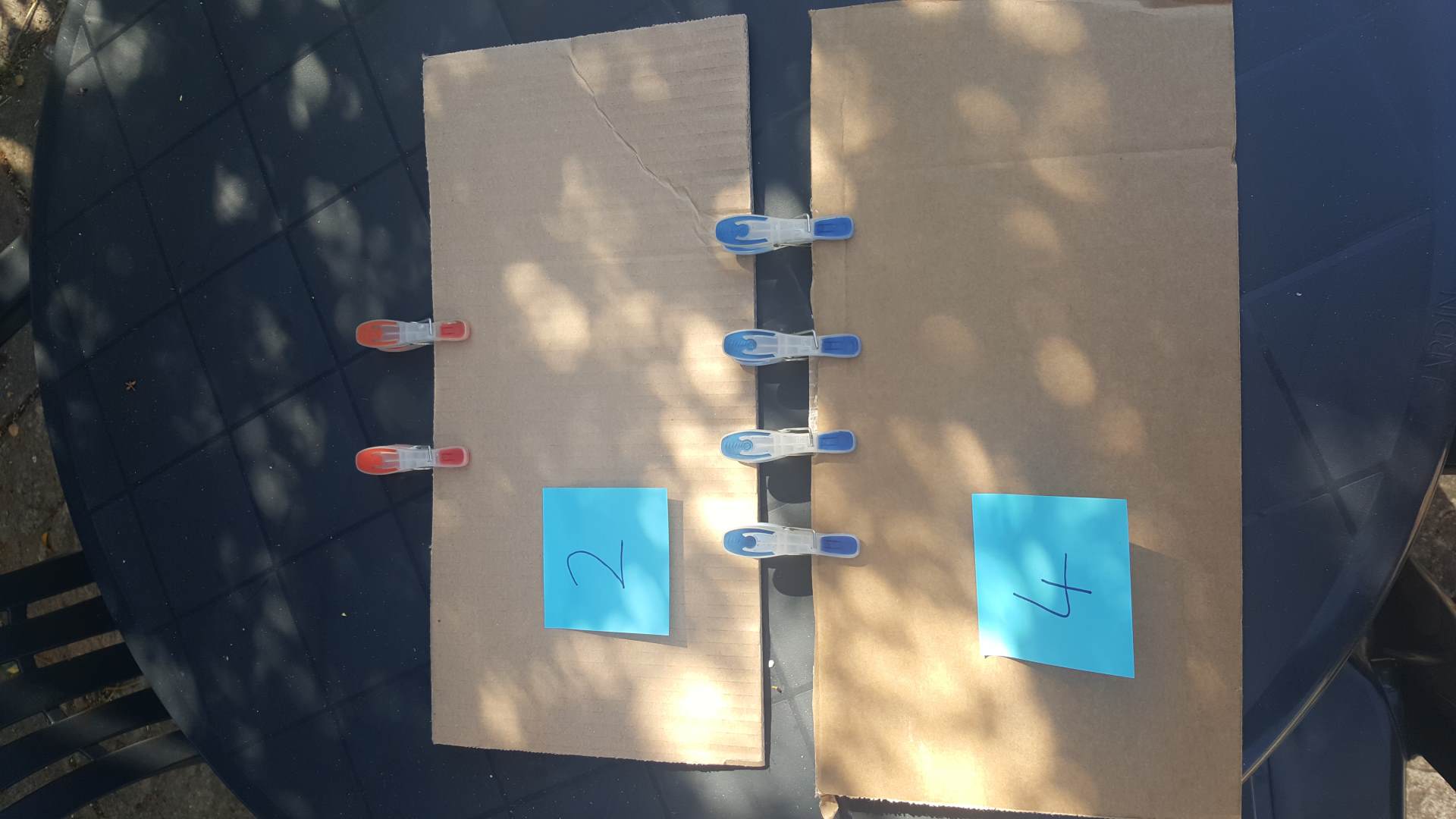

Most & Least Activity Sheets
Money
Money is a very important functional skill. It begins with an exchange. You give money in order to but something. It is important to practise this skill. You can explore and
identify different types of money, sorting into different types. You can also make and add amounts.
Learning about money exchange is an important life skill. You can have a lot of fun setting up a shop or creating a money exchange for a snack. Perhaps you could make a list and visit a local shop to buy something? Or have a look at online shops to find the prices of things, maybe adding them together or working out what you could buy with a certain amount.
Can you sort different coins into a cake tin – see photo Or write an amount in a cupcake case - children to find coin to match amount and place in cupcake case
Can you sort coins by colour/shape? Place one of each coin in bowls/tubs/cups - give children a box with a mixture of coins to sort/match to the correct bowl
Can you match the coin to the amount?
Hide coins in sensory materials such as flour, pasta, sand or jelly! Can you find the coins? Can you match them? Can you identify which coins they are?
You could try posting coins in piggy bank and make a piggy bank as an additional activity)
You could try posting coins to match an amount or posting a set of coins (ie. a set of 1ps or 2ps or 5ps or 10ps and counting in those multiples to find how much altogether)
Set up a shop - put price/coin labels on toys/snack items - children to find matching coins to the label/add coins together to purchase the items
Use the Twinkl resources to play Fastest finger first coin recognition game and match coins to their value.
Set up a shop see photo. Pull a price out of a bag. Can you identify the price? Can you match it to the item? Can you make it with coins?
Create a Treasure chest money hunt - make a treasure chest with an old cardboard box. Hide coins and get children to find them to fill their treasure chest - can they recognise the coin?
Create a list of things to find in an online shop. Can you tick them of the list? Can you identify the price?
Use our Widget resources to sort Money into colours.
There are some great Money games, you have to find the correct coin for the item, here https://www.topmarks.co.uk/maths-games/5-7-years/money
Money games http://www.crickweb.co.uk/ks1numeracy.html#Money_Box2_PoundsV3
BBC Bitesize Money https://www.bbc.co.uk/bitesize/topics/zp8dmp3
BBC Two Numbertime Money Clips https://www.bbc.co.uk/programmes/p00hl5tb/clips
More Money clips https://www.bbc.co.uk/bitesize/topics/z8yv4wx/resources/1
Money Photo Ideas



Money Activity Sheets
- Coin value matching card activity
- Faster finger coin powerpoint
- Fastest Finger Coin Recognition Cards
- Fastest Finger Coin Recognition Coin Mat
- Money property cards
- Money property sorting task
Capacity
Capacity is another really important functional skill which begins with the idea that something is there or it has gone. You can explore capacity around work with full and empty. Capacity is a skill we use frequently, making drinks and knowing that a cup is full or finished and measuring liquids as part of a recipe
Capacity is a great subject for practical life skills and sensory exploration. You can make your own drinks, measure liquid, pour objects, scoop objects, play with containers filling and emptying and use lots of different objects and materials. Most importantly have fun! Compare capacities by filling and emptying using language empty, full, more, less, more than, less than which containers hold less, which hold more?
Full and empty. Playing with containers is fun! You can choose containers of different sizes; egg cups, plastic cups, plastic tubs, pans, lids and fill and empty with a number of materials/ objects- cereal, pasta, flour, water, toys, lego, bricks, leaves, rice, lentils, popcorn, oats, orbeez
Whizz up some strawberries or bananas and measure milk to mix your own milkshake.
Make potions or silly soup with liquids. You can measure to full or half full, a line on a container or use a measuring jug to measure mls. You could have a list with the amount e.g. half cup, 1 cup, etc and they can choose what they are going to put in like rice, blue water, jelly etc
Make up drinks for you family, glasses of water, squash or juice.
Order bottles based on capacity from empty to full.
Measure fruit juice and chop fruit to make your own smoothie or try making juice cocktails with different fruit juices, following a simple recipe and measuring out amounts to make a cocktail.
Use the twinkl resources to order the potions or match the labels to the containers.
Explore and experiment with sound and capacity by making your own Water Xylophone https://www.youtube.com/watch?v=KuCBeORQsUs
Compare containers based on their capacity and looking at whether size matters.
Have a go at some cooking. A lot of recipes use cups to measure and this is a great way to explore capacity. E.g 2 cups of cornflakes, 1 cup of melted chocolate
Play a capacity game. Have a set of containers with lines drawn on to fill to- who can fill theirs first
Try some estimating, How many pom poms do you think will fit into a cup? How many pieces of pasta? How many bricks? How many cups of water do you think it will take to fill a bucket?
You could explore capacity by packing a small case or box for one of your toys.
BBC Bitesize Capacity https://www.bbc.co.uk/bitesize/topics/zt9k7ty/articles/zp8crdm
https://www.bbc.co.uk/teach/supermovers/ks1-maths-capacity-volume/zj8njhv
Capacity games https://www.topmarks.co.uk/Search.aspx?q=capacity
Play capacity countdown https://www.ictgames.com/mobilePage/capacity/index.html
https://www.splashlearn.com/math-skills/kindergarten-grade/measurements-gk/capacity
Capacity Activity Sheets
- Capacity Poster Activty
- Capacity matching cards EYFS
- Ordering magic potions capacity worksheet
- Poster Instructions
Fractions
Sharing is an important building block to division. It is also an important social skill which can be worked on. Sharing toys and food is a great way to practise sharing skills.
There are lots of ways you can explore and engage in fractions. Learn about whole, halves and quarters. You can do lots of practical halving and quartering. You can share objects/ pictures into half and quarter. Half and quarter amounts, sharing between 2, 3, 4 or any number!
Pizza- Whenever we think about fractions pizza come into thought! That and cake! You could use excellent life skills making a pizza or decorating a pizza base/ mini bread muffin or pitta bread and then use it to explore halves and quarters.
Paper Plate pizza fractions https://theimaginationtree.com/paper-plate-pizza-fractions/
Vegetables and fruit are fun to explore, halving and quartering. You can also share sections between two people- halving the amount. How many pieces/ items does each person get? Fruit is great for exploring how two halves make a whole. Try halving different types of fruit and finding the other half
Halve jaffa cakes or kitkats as they are easy to break or Share a selection of items between bowls (e.g. pom-poms, cars, food etc.)
Play cards/ matching and share the cards out. You could also try counters halving the amount. Sharing into different numbers- between 2, 3 or 4. This can work with cereal/ pasta too.
Create some pipe cleaner bird feeders. You will need pipe cleaners and cheerios. Thread the cheerios onto the pipe cleaners sharing the amount equally between a number of birds.
Use the printable pictures to explore and match and identify halves and quarters
Practice colouring/painting whole/half/quarters of shapes or cutting shapes into sections.
Cut play dough shapes in halves and quarters. Roll it into balls and share between plates/ bowls
Divide a paper plate in halves/quarters and decorate segments - explore putting the segments back together again to make a whole
Fractions games https://www.topmarks.co.uk/Search.aspx?q=fractions
Fractions Activity Sheets
- Differentiated halving to 20 ladybird activity sheets
- Find a Half Worksheet
- Finding half and quarter activity sheet
- Fractions halving
- Fractions Quarter Activity Sheet
- Pizza Fractions Worksheets Halves Quarters and Thirds
- Read and Colour a Fraction
- What is a quarter quarters activity cutouts
- What is half halving activity cutouts
Practical Outdoor Nature Maths
Go outdoors to consolidate your maths skills. Counting, spotting shapes, measuring outdoor objects. There are many ways you apply maths skills you have learnt.
There are so many wonderful practical maths activities you can do to understand apply and consolidate lots of different mathematical skills whilst having lots of fun too!
Have fun counting! Counting as you walk/ bounce on the trampoline, scoot, hope, skip, jump ( you could create lines/grids with chalk)
Create number targets for beanbags, balls, frisbees to throw into. Identifying numbers/ adding as you go. You could also have a target number and subtract from it each time to develop subtraction skills.
This is great messy play. Shaving foam Target practise using cereal or round crisps- see photo How many crisps can hit the shaving foam.
Outdoor counting and tally- You can draw a chalk grid, collecting things outside and then create a tally/ mark how many of each item you have found see photo
Nature Numbers hunt- Complete the nature hunt, counting how many of each thing you see.
Number Knock! Stack up some plastic cups or pots and spray down with a water gun. How many pots did you knock over? see photo
Bowling! If you have bottles, cups or carboard rolls you can have a game of bowling! Counting, adding, subtracting the number of pins you knock down. see photo
Can you make some 2d shapes using sticks see photo try a square, a rectangle a triangle or a hexagon? How many sticks would you need for each shape? Talk about the number of sides and number of corners. You could also try making numbers using sticks or twigs too. see photo
Try some outdoor measuring. You could measure plants, flowers, twigs. Have a go at collecting a few and ordering them by measurement. You could use different things to measure. Can you find a stick and then find other sticks/ objects that are the same length?
Go on a shape hunt. You could have a list or pictures to tick off. Can you find square windows, rectangular windows, even circular windows! What about bricks, stones? Can you identify their shape?
Can you create patterns using outdoor objects? Leaves, flowers, twigs, stones. You can repeat the pattern or make a symmetrical pattern see photo using leaves or shells. You could spot repeating patterns in walls or paving stones
Some fun waterplay! Blow up some waterbombs and number them from 1-20. Chalk Numbers on the ground and match the water bomb with the number. Throwing it with a big splat!
Try some of our ‘Sticky Maths’ ideas using sticks. Se our resource for inspiration.
Number pebbles - paint numbers onto pebbles/match numbers/add using pebbles
Nature shapes, create shape outlines with sticks/leaves/pebbles you could chalk an outline to follow first.
Hopscotch/chalk numbers/chalk shapes
Making sets of natural items in plant pots - e.g. write numbers on plant pots and collect this number of sticks
Number hunt in the garden - hide number cards around the garden for the children to find, recognise and match
Practical Maths Photo Ideas


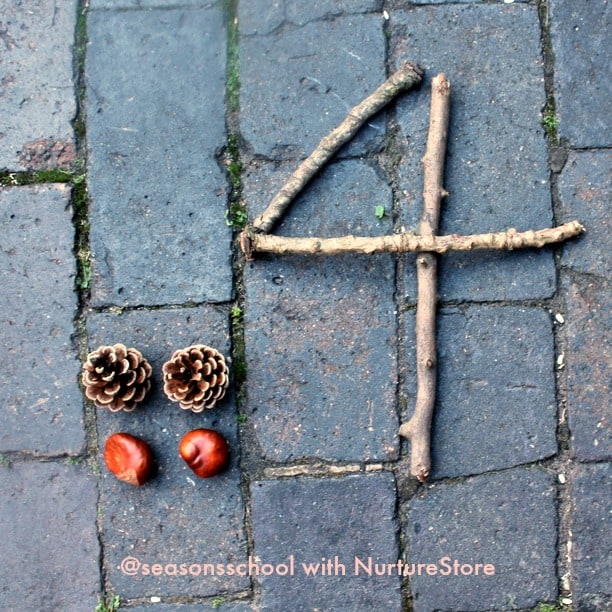

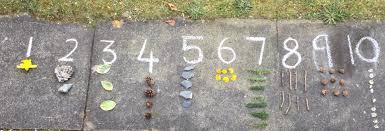




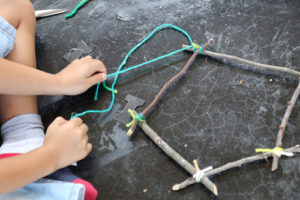


 Springwell
Springwell

